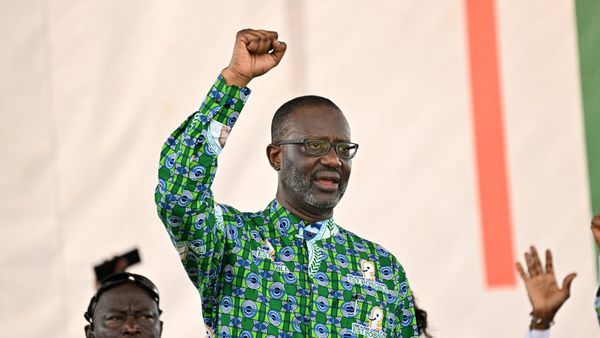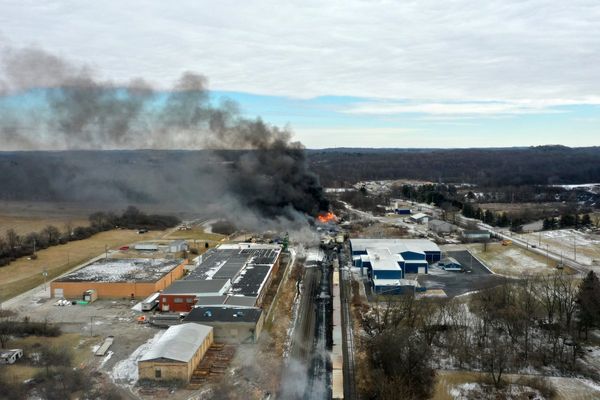Yuendumu man Kumanjayi Walker likely posed a low-level threat to police when Constable Zachary Rolfe fired a second and third shot at the 19-year-old during an attempted arrest, an expert witness has told the Northern Territory police officer's murder trial.
WARNING: Aboriginal and Torres Strait Islander readers are advised that this article contains an image of a person who has died, used with the permission of their family.
Biomechanical expert Andrew McIntosh on Friday gave evidence in the NT Supreme Court, where Constable Rolfe, 30, has pleaded not guilty to murder and two alternative charges over the fatal shooting in the remote community in November 2019.
Dr McIntosh was asked about the moments after Mr Walker began to struggle with Constable Rolfe and fellow officer Constable Adam Eberl, when the 19-year-old stabbed Constable Rolfe in the shoulder with a pair of medical scissors.
The first shot then fired by Constable Rolfe is not the subject of any charges, but prosecutors argue the second and third shots fired 2.6 and 0.5 seconds later were not legally justified because the threat posed by Mr Walker had been contained.
Dr McIntosh said the body-worn camera footage of the incident showed that after the first shot, Mr Walker and Constable Eberl fell onto a mattress on the floor.
As Mr Rolfe moved towards them with his gun drawn, Dr McIntosh said Constable Eberl could be seen putting his body weight on top of Mr Walker, who was lying on his right side.
Dr McIntosh said this meant Mr Walker's right arm, which was holding the scissors, would likely have been restricted in its movement range.
Under questioning from the prosecution, he agreed that when the second and third shots were fired, Mr Walker was not likely to be a "direct threat" to Constable Rolfe.
He agreed Mr Walker was likely to be a "low threat" to Constable Eberl, because his ability to deploy the scissors was impaired, as his arm was stuck beneath him.
"If you're using a weapon in your hand and your arm is pinned in that way, then it's very difficult to develop force with the weapon that you have because you can't accelerate your arm, reach any velocity, reach any momentum and exert a force onto someone else," Dr McIntosh said.
He said the degree of restriction depended on how much of Mr Walker's right arm was under his own body and that even if only the upper arm was pinned down, his movement would have been "greatly constrained".
Under cross-examination from the defence, Dr McIntosh agreed the body-worn camera footage never showed the extent of control Constable Eberl had on Mr Walker's right forearm, while he was lying on top of him.
Dr McIntosh also agreed that he had the "luxury of slowing down" the vision to make his analysis, which the officers were not able to do during the incident.
"Do you accept that the perception, or perspective, of both officers Eberl and Rolfe, may be quite different from your analysis?" defence barrister David Edwardson QC asked.
"Yes," Dr McIntosh replied.
Forensic pathologist Paull Botterill also took the stand on Friday and told the court the "overwhelming majority of stab and incised wounds" in the general community do not result in death.
But he said Mr Walker's scissors did have the potential to cause a life-threatening injury if they had struck a vulnerable part of the body at a sufficient force.
He added that if Mr Walker's arm movement was restricted, the likelihood of a lethal injury was slim.
"If the limb was not able to freely move, then the only way that an implement such as those scissors could have resulted in a serious life-threatening injury would be if there was movement of the other party, the police officer, up against that immobilised weapon," Dr Botterill said.
"And it's very unlikely to result in a potentially fatal injury."
At the end of Friday's proceedings Crown prosecutor Philip Strickland SC said he would call two more witnesses on Monday and expected to wrap up the prosecution's case on Tuesday morning.
The trial continues before Justice John Burns.







